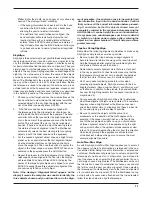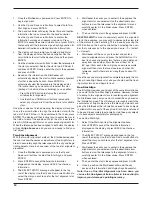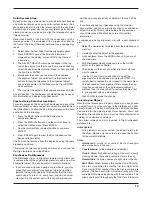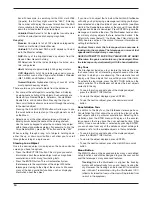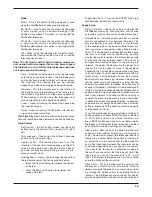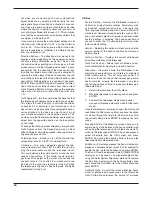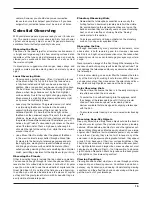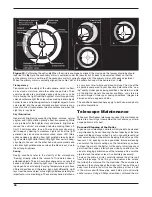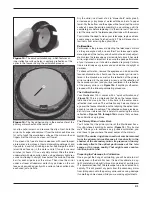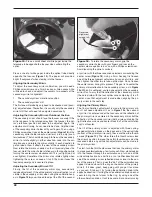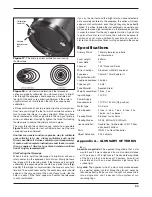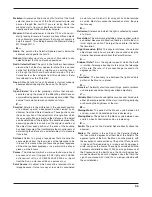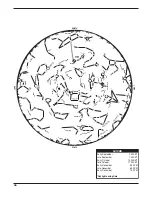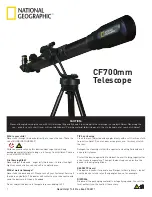
25
Meridian: A reference line in the sky that starts at the North
celestial pole and ends at the South celestial pole and
passes through the zenith. If you are facing South, the
meridian starts from your Southern horizon and passes
directly overhead to the North celestial pole.
Messier: A French astronomer in the late 1700’s who was pri-
marily looking for comets. Comets are hazy diffuse objects
and so Messier cataloged objects that were not comets to
help his search. This catalog became the Messier Catalog,
M1 through M110.
n —
Nadir: The point on the Celestial Sphere directly below the
observer and opposite the zenith.
Nebula: Interstellar cloud of gas and dust. Also refers to any
celestial object that has a cloudy appearance.
North Celestial Pole: The point in the Northern hemisphere
around which all the stars appear to rotate. This is caused
by the fact that the Earth is rotating on an axis that pass-
es through the North and South celestial poles. The star
Polaris lies less than a degree from this point and is there-
fore referred to as the “Pole Star”.
Nova: Although Latin for “new” it denotes a star that suddenly
becomes explosively bright at the end of its life cycle.
O —
Open Cluster: One of the groupings of stars that are con-
centrated along the plane of the Milky Way. Most have an
asymmetrical appearance and are loosely assembled. They
contain from a dozen to many hundreds of stars.
P —
Parallax: Parallax is the difference in the apparent position
of an object against a background when viewed by an
observer from two different locations. These positions and
the actual position of the object form a triangle from which
the apex angle (the parallax) and the distance of the object
can be determined if the length of the baseline between the
observing positions is known and the angular direction of
the object from each position at the ends of the baseline
has been measured. The traditional method in astronomy of
determining the distance to a celestial object is to measure
its parallax.
Parfocal: Refers to a group of eyepieces that all require the
same distance from the focal plane of the telescope to be
in focus. This means when you focus one parfocal eyepiece
all the other parfocal eyepieces, in a particular line of eye-
pieces, will be in focus.
Parsec: The distance at which a star would show parallax of
one second of arc. It is equal to 3.26 light-years, 206,265
astronomical units, or 30,8000,000,000,000 km. (Apart
from the Sun, no star lies within one parsec of us.)
Point Source: An object which cannot be resolved into an
image because it to too far away or too small is considered
a point source. A planet is far away but it can be resolved
as a disk. Most stars cannot be resolved as disks, they are
too far away.
R —
Reflector: A telescope in which the light is collected by means
of a mirror.
Resolution: The minimum detectable angle an optical system
can detect. Because of diffraction, there is a limit to the min-
imum angle, resolution. The larger the aperture, the better
the resolution.
Right Ascension (RA): The angular distance of a celestial
object measured in hours, minutes, and seconds along the
Celestial Equator eastward from the Vernal Equinox.
S —
Sidereal Rate: This is the angular speed at which the Earth
is rotating. Telescope tracking motors drive the telescope
at this rate. The rate is 15 arc seconds per second or 15
degrees per hour.
T —
Terminator: The boundary line between the light and dark
portion of the Moon or a planet.
u —
Universe: The totality of astronomical things, events, relations
and energies capable of being described objectively.
V —
Variable Star: A star whose brightness varies over time due to
either inherent properties of the star or something eclipsing
or obscuring the brightness of the star.
W —
Waning Moon: The period of the Moon’s cycle between full
and new, when its illuminated portion is decreasing.
Waxing Moon: The period of the Moon’s cycle between new
and full, when its illuminated portion is increasing.
Z —
Zenith: The point on the Celestial Sphere directly above the
observer.
Zodiac: The zodiac is the portion of the Celestial Sphere
that lies within 8 degrees on either side of the Ecliptic. The
apparent paths of the Sun, the Moon, and the planets, with
the exception of some portions of the path of Pluto, lie with-
in this band. Twelve divisions, or signs, each 30 degrees in
width, comprise the zodiac. These signs coincided with the
zodiacal constellations about 2,000 years ago. Because of
the Precession of the Earth’s axis, the Vernal Equinox has
moved westward by about 30 degrees since that time; the
signs have moved with it and thus no longer coincide with
the constellations.
Summary of Contents for 8993
Page 27: ...27 Appendix C Time Zones ...

